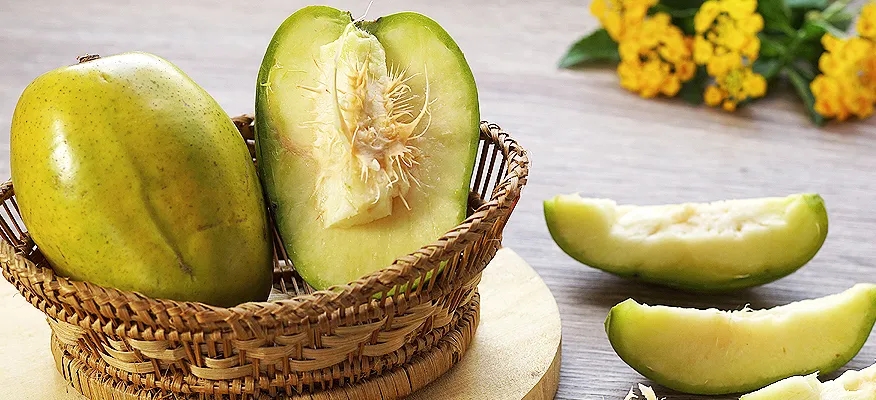Ambarella Fruit: Top 15 Health Benefits You Should Know
- By Song Yin Wa
- 21 May 2025
- Verified by Soo Yun Wen

Key highlights or summary
- Ambarella fruit is rich in nutrients, supporting overall health.
- It boosts immunity and aids digestion.
- Perfect for diverse recipes, from salads to juices.
- Offers benefits during pregnancy, with caution.
- Store properly to preserve freshness and benefits.
Rate our article
We'd love to know!
- 0
- 0
- 0
- 0
Related articles
See AllFrequently asked questions
Get the information you need.
The ambarella fruit has a unique taste that blends sweet, sour and slightly bitter flavors. When it's unripe, it tends to be more on the sour side.
Yes, ambarella is also known as the June plum or golden apple in different regions. Other names include kedondong fruit, buah long long, and spondias dulcis.
Ambarella is called hog plum due to its resemblance to a small green plum and its popularity as a food source for hogs in some countries. Although a hog plum and ambarella fruit are not related.
Ambarella fruit is predominantly grown in tropical regions such as Southeast Asia, South Pacific Islands, India, Sri Lanka, and parts of Africa and Central America.
Yes, ambarella fruit is good for weight loss. This tropical fruit is low in calories and fat, making it an ideal choice for those aiming to shed extra pounds. Its high dietary fiber content promotes a feeling of fullness, which can help reduce overall food intake and prevent overeating. The fiber also aids digestion and supports a healthy gut—both of which are essential for effective weight management. Additionally, ambarella’s natural sugars provide a quick energy boost without causing sharp spikes in blood sugar levels, making it a healthier snack alternative to processed foods. Its rich antioxidant profile may also help reduce inflammation, which is often linked to obesity and metabolic issues. Incorporating ambarella fruit into a balanced diet and active lifestyle can be a smart and tasty way to support your weight loss goals.
Absolutely! Ambarella fruit is packed with vitamin C which enhances immune function.
A 100-gram serving of fresh, raw ambarella fruit contains approximately 30 mg of vitamin C.
Yes, the high fiber content in ambarella promotes healthy digestion and prevents constipation.
While more research is needed, early studies suggest that the potassium in the ambarella fruit can help dilate blood vessels leading to lower blood pressure.
As a low-glycemic index fruit, ambarella may be safe for individuals with diabetes when eaten in moderation. Always consult your healthcare provider.
Popular recipes include ambarella fruit juice, salads, pickles, and even desserts. In Malay cooking, it is also used in a dish known as rojak.
To make ambarella fruit juice or umbra juice, simply blend ripe ambarella fruits with water, strain the mixture and sweeten to taste.
Ambarella fruit can be beneficial during pregnancy due to its high vitamin C content. However, ambarella has a mild diuretic effect and diuretics are not typically recommended during pregnancy. It is best to check with your healthcare provider before adding ambarella fruit to your diet.
Like any food, ambarella fruit can cause allergies in rare cases. If you experience allergic symptoms after eating it, seek medical advice.
Eating ambarella regularly can be part of a balanced diet due to its nutrient content. However, like any food, it should be enjoyed in moderation.
With its high vitamin C content, dietary fiber, and other nutrients, the health benefits of the ambarella fruit make it a worthy addition to the superfood list.
You can enjoy ambarella in several delicious and healthy ways. When unripe, ambarella is firm, tangy, and slightly sour, making it perfect for pickles, chutneys, or dipping in salt and chili powder as a refreshing snack. Ripe ambarella, on the other hand, becomes juicy and sweet with hints of pineapple and mango, and can be eaten fresh on its own or added to fruit salads and smoothies. In many Southeast Asian and Caribbean cuisines, it’s also used in curries, juices, jams, and sauces. Some even blend ambarella with other tropical fruits to make flavorful beverages. Both the fruit and its juice are packed with nutrients, making it a tasty and healthful addition to your diet.
How was the experience with article?
We'd love to know!